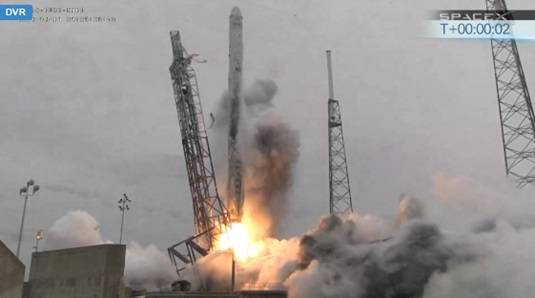William Harwood reports for CBS News:
Making its first flight since a catastrophic launch failure last June, an upgraded, more powerful SpaceX Falcon 9 rocket roared to life and shot into space Monday, boosting 11 small Orbcomm data relay satellites into orbit in a major milestone for the California rocket builder.
In a significant space “first,” the Falcon 9’s first stage fell back into the atmosphere and pulled off a powered landing at the Cape Canaveral Air Force Station, settling to a smooth tail-first touchdown in a convincing demonstration of reusability, a key requirement for lowering commercial launch costs.
In a scene resembling a launch video running in reverse, the booster quickly dropped out of a cloudy sky atop a jet of flame from one of its Merlin 1D engines, heralded by twin sonic booms that rumbled across Florida’s Space Coast. Cheers erupted in company headquarters in Hawthorne, California, as the stage settled to a smooth touchdown.
In another first, the Falcon 9 used colder, denser-than-usual liquid oxygen and kerosene propellants, a significant upgrade allowing the booster’s nine first-stage engines to generate more power, increasing their combined liftoff thrust from 1.3 million pounds to 1.5 million, or 170,000 pounds of thrust per engine.
The launch, first-stage landing and satellite deployments all appeared to proceed without a hitch, a welcome success for a company returning to flight after a disheartening failure.
“Everything we’ve seen thus far in the mission appears to be perfect,” SpaceX founder Elon Musk said in a conference call with journalists. “The satellites were deployed right on target and the Falcon 9 booster came back and landed. Looks like almost dead center on the landing pad. … As far as we can see right now, it was absolutely perfect. We could not have asked for a better mission.”
There and back again pic.twitter.com/Ll7wg2hL1G
— Elon Musk (@elonmusk) December 22, 2015




